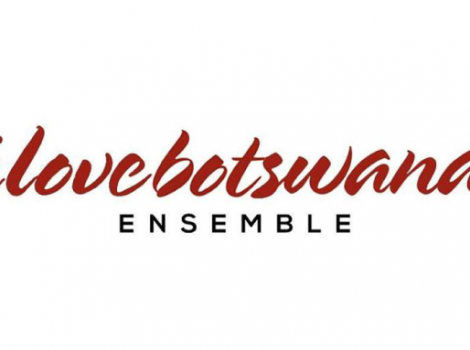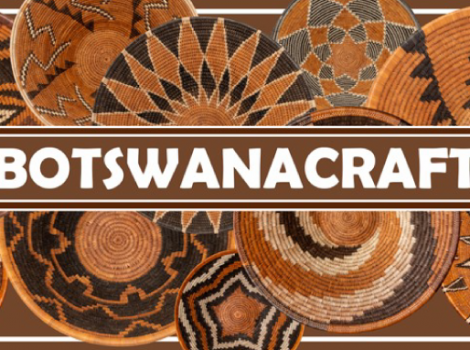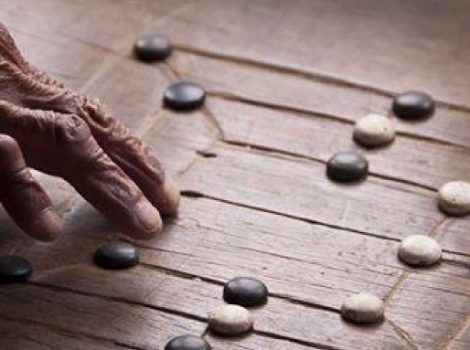While Batswana are proud of their national identity, they are equally as proud to wear their individual tribal ‘badges of honour’. However, Batswana also do not let their tribal differences define them and set them apart from their fellow Batswana, as is often the case with some African countries.
In fact, Batswana view their ethnic diversity as an asset and something to be celebrated. Likewise, the Botswana government regularly promotes the idea of Botswana being a ‘compassionate, just and caring nation’. It’s very rare to hear someone identify themselves as being of a certain tribe unless you specifically ask them because they largely see themselves as Batswana above all else; a united Botswana nation.
There is a lot of ribbing and banter between different tribes, which usually centres around various myths, regional dialects and suspect fashion tastes, among others. But for the most part, it’s all in gest and something that Batswana use to build rapport; certainly not something that is likely to result in deadly tribal battles and bloodshed.
The majority of Batswana are of Tswana descent, explaining why most Batswana speak Setswana (the main language spoken by Batswana). The Setswana language, which belongs to the greater African Bantu language family, is spoken by about 80% of the population.
Tribes that make up the Botswana nation
There are eight major tribes in Botswana, each of which is headed by its own Chief called a Kgosi. Chiefs are tribal leaders who are to this day still respected and revered, and all sit in the House of Chiefs (Ntlo ya Dikgosi). The house of Chiefs is basically a council of chiefs that serves as an advisory body to the Botswana parliament.
The people of Botswana are called “Batswana” and it is after them that the country is named. Botswana has over twenty different tribes, giving the country a rich infusion of cultural diversity.
Botswana Tribes
Bangwato / Bakwena / Bangwaketse / Bakgatla / Barolong / Batawana / Bahurutshe / Balete / Bakalanga / Bayei / Bambukushu / Basubiya / Basarwa / Batlokwa / Babirwa / Baherero / Bakgalagadi / Bakgothu / Batswapong among others.
The Eight Major Tribes
| Location | Totem | Also Known As | |
| Bakgatla | Mochudi | Monkey | Kgabo |
| Bakwena | Molelpole | Crocodile | Mokwena |
| Balete | Ramotswa | Buffalo | – |
| Bangwaketse | Kanye | Crocodile | – |
| Bangwato | Serowe | Duiker (antelope) | Mongwato |
| Barolong | Good Hope | Kudu | – |
| Batawana | Maun | Kudu | Mongwato |
| Batlokwa | Tlokweng | Thakadu | – |
*Some tribes don’t appear to have a totem, while others can be ambiguous.
Ethnic Minority Tribes of Botswana
The indigenous people of Botswana, the Setswana-speaking group makes up about 80% of the entire population. Major minority ethnic groups include the Kalanga and the San. There are about 10,000 San who still lead the hunter-gatherer lifestyle. The Botswana government has over the years been criticised for attempting to relocate the San from the Central Kalahari Game Reserve with aims of assimilating them into Botswana’s social and economic life.
| Location | Totem | Also Known As | |
| Babirwa | Tuli Block | – | – |
| Baherero | Delta & Maun | – | |
| Bahurutshe | All over Botswana | Baboon | – |
| Bakalanga | Francistown area | – | – |
| Bakgalagadi | Gantsi & Kang | – | – |
| Bakhurutshe | All over Botswana | Baboon | – |
| Banoka | Okavango Delta | – | River Bushmen |
| Basarwa | Central Kalahari | – | – |
| Basubiya | Kasane | Elephant | – |
| Batswapong | Selebi Phikwe | Mountain Rabbit | – |
| Bayei | Okavango Delta | – | – |
| Hambukushu | Etsha 6 & 13 | – | – |
*Some tribes don’t appear to have a totem, while others can be ambiguous.
Batswana of European and Asian descent, who began arriving in the early 19th century, have settled mostly in the urban areas and the Okavango Delta. A group of Afrikaans-speaking people from South Africa settled in and around the Gantsi district, where they mainly run commercial farming ventures.
White Africans make up only 3% of the population. Botswana has a large Indian population; Indian-Africans going back many generations who came from South Africa, Mauritius, Kenya and elsewhere. Although all these tribes exhibit obvious cultural differences, the mutual respect for each other’s traditions has resulted in harmonious co-existence. In turn, this co-existence has led to inter-cultural assimilation.
Spotlight on the Bayei, Basubiya, Hambukushu
There are three main groups in the north of the country – the Basubiya, the Bayei and the Hambukushu. These all live in the region South of the Chobe River. There are many cultural similarities between them, and their fortunes have been intertwined throughout the years.
The Bayei, defeated in a battle with the Basubiya, moved to the Linyanti River area. They were forced move deep into the Okavango Delta and it is there that in the late 18th century, they came across a tribe called the Banoka (River Bushmen.) The two tribes co-existed peacefully, sharing skills. The Banoka had only ever fished with woven baskets until the Bayei showed them how to make nets, and in return, the Banoka demonstrated how to build traps on game trails.
The Bayei became renowned for their hippo hunting, which they carried out with harpoons from mekoro. In modern day Botswana, Bayei work as ‘mokoro polers’, taking tourists through the waterways of the Okavango Delta.
The Hambukushu originally came from the Zambezi River area, but were also driven out by the Balozi, fleeing to an area between the Chobe and Linyanti rivers already inhabited by the Bayei. The Hambukushu eventually moved again, this time to the far North of the Okavango Delta. As fishermen, they preferred the deeper waters of the Northern channels, and like the Bayei they used mekoro (dug-out canoes) for fishing.
The Hambukushu are particularly known for their fantastic basket-weaving skills using mokolwane palm trees and incorporating decorations of animals or geometric shapes.
Totems Explained
While some groups have non-animal totems, most Batswana have animals as their group or community totem. The totem is a symbolic representation of a strong association with a specific animal, and with the natural world in general.
The totem is given extraordinary respect, usually because of a specific event that occurred in a group’s history or more generally because of the nature of the interaction between the group and their particular totem animal. For instance, the Bangwato tribe’s totem is the duiker, a small nondescript antelope species, which is revered in their mythology for saving the life of their chief.
Likewise, the aardvark serves as the Xaniqwee people’s totem, because hundreds of years ago when the group first navigated their way up to the Okavango region they had to traverse through the parched and unforgiving terrain of the Kalahari.
The aardvark led them to much-needed water that they found trapped in the animals’ burrows. The Xaniqwee have since revered the aardvark, choosing it as their totem. As with all other totems, for the Xaniqwee tribe; out of respect for their totem, there are restrictions on the hunting or handling of the aardvark.
Various things that different tribes rib each other about
Bakalanga – an ‘interesting’ sense of fashion. Batswana generally believe Bakalanga have no sense of colour coordination and will often throw together colours that don’t work well together, or even flatter their generally darker hues.
Bangwato Ladies are believed to generally be voluptuous, with over-exaggerated curves everywhere!
Bakgatla are famed for turning the air blue with foul language, something that’s seen as part of their ‘culture’.
Batawana are often ribbed for their very distinct and broad accent.
Bangwaketsi ladies draw the short straw with the general belief that they are always out to fleece their boyfriends.
Batswapong are always teased about their supposed love of bread.
Did you enjoy this article? Please share and/or share your thoughts with YourBotswana.
Reference: worldpopulationreview.com / National Geographic / otlogetswe.com




Please assist in Getting my family. Bakubong baga Gaeshwe.
Really interesting post!
?This is amazing. It should be shown to all the students in Botswana . You should write a blog about this .
Your style is so unique in comparison to other similar sites. Thank you for posting.
Food for ethics groups
Ke kopa go botsa, ba ga Tone, ba wela ko go which tribe? Ke itse ba ana Tlou #justcuriousaboutmyorigins
please locate my comments page, done less than ten minutes ago, thanks.
Good evening where can i find complete information of the history of all tribes in the North East of Botswana
Thank you,
I went to school in Massachusetts with Sande Greer of the Okavango Delta.
Dumelang, great mine of information! I am interested in finding Babina Khudu who used to live in the South of Johannesburg with Bakwena.
I’m trying to find the totem of Bakgalagadi but non is posted this is for a school project, I was always under the impression that Bakgalagadi have an elephant as their totem some say phiri. Please help me find if this is true
ke itumela thata ga ke bona lemorago la batswana le kwadilwe sentle jaana,
01. ke kopa re siamise leina la kolobe ya nageng, ke wild pig eseng aardvark, aardvark ke seeng sa holland se se patelediwang ebile se sa nne sentle mo batswaneng,
02. kgang e nngwe ke duiker, leina la phologolo e, ke phuthi kgotsa antelope, se hollander se a petelediwa, ebile maikaelelo ke go nyeletsa puo ya setswana, maafrika a itshoketse puo ele nngwe ya seeng, eleng sejatlhapi, ga go batlege gore puo ya seeng ya se hollander e tsenngwe godimo ga sejatlhapi,
03. merafe ye eseng maafrika re ba bitsa ka mafatshe aba tlholegang go one, jaaka makgowa, mahollander, maindia, machina, ke kopa re se bitse morafe ope o eseng was afrika ka leina la afrika,
04. ke kopa go botsa gore a baphuthing ba ba fitlhelwang mo bokonebophirima jwa south afrika, ke bakwena kgotsa ba ikemetse, lemorago la baphuthing le simolotse kae ka ngwaga efe,
05. a batswana ba ba fitlhelwang mo south afrika ba tswa mo batswaneng ba botswana kgotsa jang,
ke a leboga.
Dumela Bareng. Very interesting question, I would also like to know. Ke motswana wa South Africa, ke mohurutshe. O tla intshwarela, ga ke itse Setswana but would love very much to learn, ke bua Sesotho. Thank you very much.
what is the tribe and totem of Mmadinare people
I love this website, good job.
Thanks for anther magnificent piece of information about Botswana.
Hello I am so grateful I found your website, I really found you by accident, while I was searching for something else. Anyways I am here now and would just like to say kudos for a incredible post and all round entertaining blog (I also love the theme/design), I don’t have time to go through it all at the minute but I have bookmarked it, so when I have time I will be back to read a lot more. Please do keep up the great work.
I saw a lot of website but I believe this one has got something extra in it.